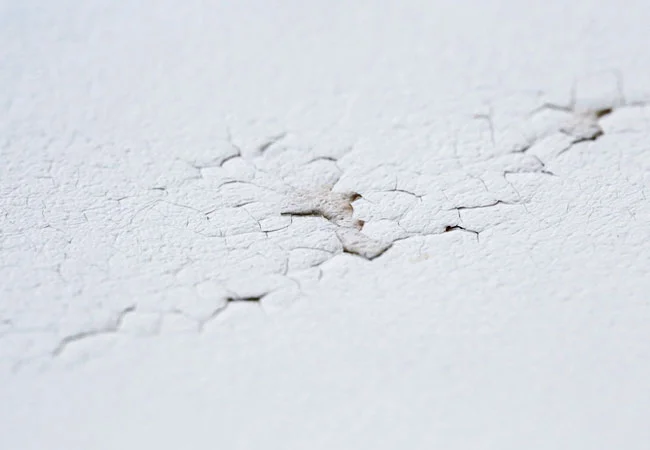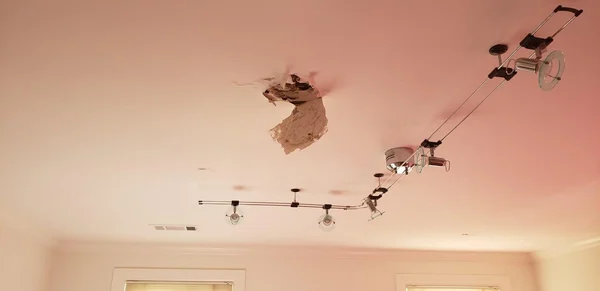Discovering a Crack in the Basement Ceiling can be a cause for concern for homeowners. In this comprehensive guide, we’ll delve into the intricacies of this issue, exploring the potential causes, implications, and effective solutions to ensure the structural integrity of your home. Arm yourself with knowledge to navigate this common challenge and make informed decisions about repairs and maintenance.

The Unseen Challenge: Acknowledging the Presence of a Crack in the Basement Ceiling
Deciphering the Signs: How to Recognize a Crack in the Basement Ceiling
Identifying a crack in the basement ceiling is the first step in addressing the issue. Look for visual cues such as:
- Visible Lines or Gaps: Inspect the ceiling for visible cracks, lines, or gaps.
- Changes in Paint or Texture: Noticeable changes in paint or texture may indicate the presence of underlying cracks.
- Water Stains: Water stains near the crack could suggest potential water intrusion issues.
The Anatomy of a Crack: Understanding the Causes
1. Foundation Settlement
One common cause of cracks in the basement ceiling is foundation settlement. As the soil beneath the foundation shifts or compresses, it can lead to structural movement, resulting in cracks in the basement and throughout the home.
2. Hydrostatic Pressure
Hydrostatic pressure, caused by water buildup in the soil surrounding the foundation, can exert force on the basement walls and ceiling. This pressure can lead to cracks as the structure tries to accommodate the external forces.
3. Structural Overload
Excessive loads on the basement walls or ceiling, whether from internal factors like renovations or external factors like soil pressure, can contribute to the development of cracks. Understanding load-bearing capacities is crucial for preventing structural damage.
The Implications: Potential Risks of Ignoring a Crack in the Basement Ceiling
1. Water Intrusion and Mold Growth
A crack in the basement ceiling can serve as a gateway for water intrusion. This water, if left unaddressed, can lead to mold growth, compromising indoor air quality and posing health risks for occupants.
2. Structural Instability
Ignoring a crack may result in the progressive deterioration of the basement’s structural integrity. Over time, this can lead to more severe issues, such as sagging ceilings or even structural failure.
The Solution: Addressing and Repairing a Crack in the Basement Ceiling
1. Professional Inspection
If you discover a crack in your basement ceiling, seeking a professional inspection is crucial. Structural engineers or qualified contractors can assess the severity of the issue, identify the underlying cause, and recommend appropriate solutions.
2. Epoxy Injection
For minor cracks, epoxy injection is a common repair method. Epoxy is injected into the crack to fill and seal it, restoring the structural integrity of the affected area.
3. Waterproofing Measures
Addressing the underlying cause of the crack, such as hydrostatic pressure or water intrusion, may involve implementing waterproofing measures. This can include proper drainage systems, exterior waterproofing coatings, and the installation of a sump pump.
Preventive Measures: Safeguarding Your Basement
1. Proper Grading and Drainage
Ensuring proper grading around your home directs water away from the foundation, minimizing the risk of water-related issues.
2. Routine Maintenance
Regularly inspect your basement for signs of cracks, water stains, or changes in the structure. Promptly addressing minor issues can prevent them from escalating into major problems.
3. Professional Consultation for Renovations
If you’re planning basement renovations or structural modifications, consult with a professional to ensure that the changes won’t compromise the integrity of the basement ceiling or walls.
Read too: Exploring What Causes Ceiling Cracks and How to Address Them: Unveiling the Mysteries
Conclusion: Navigating the Challenges of a Crack in the Basement Ceiling
In conclusion, discovering a Crack in the Basement Ceiling warrants prompt attention and action. Understanding the potential causes, implications, and repair options empowers homeowners to make informed decisions for the well-being of their homes.
Whether through professional inspections, targeted repairs, or preventive measures, addressing basement ceiling cracks is essential for maintaining a safe, dry, and structurally sound living space.
